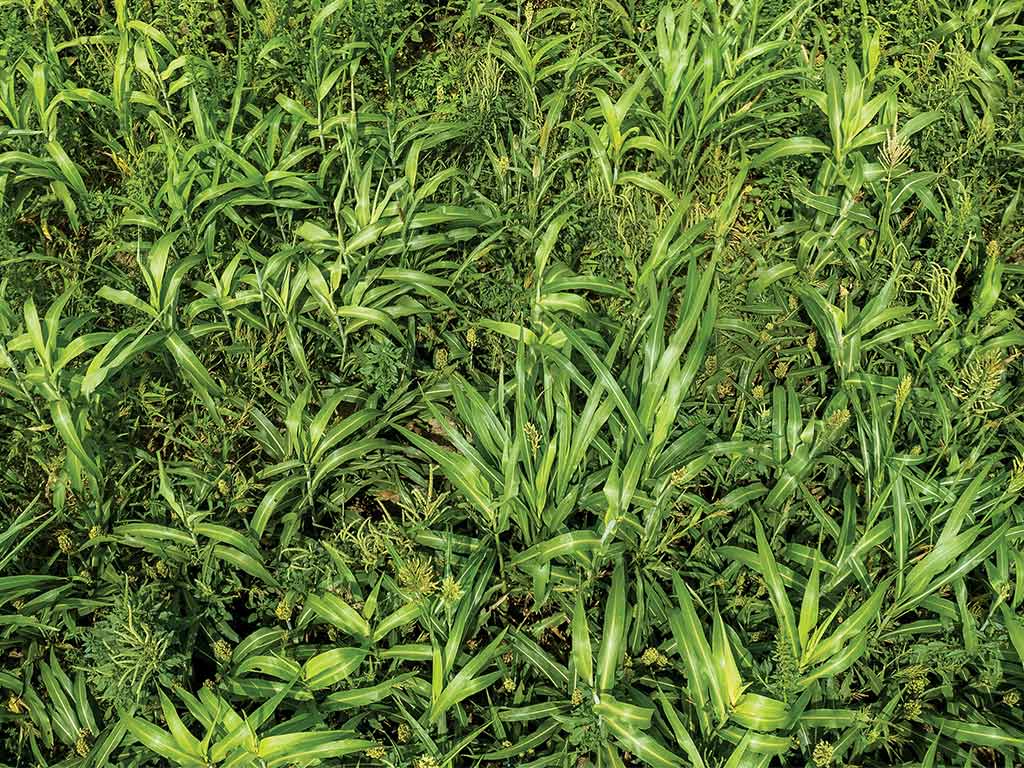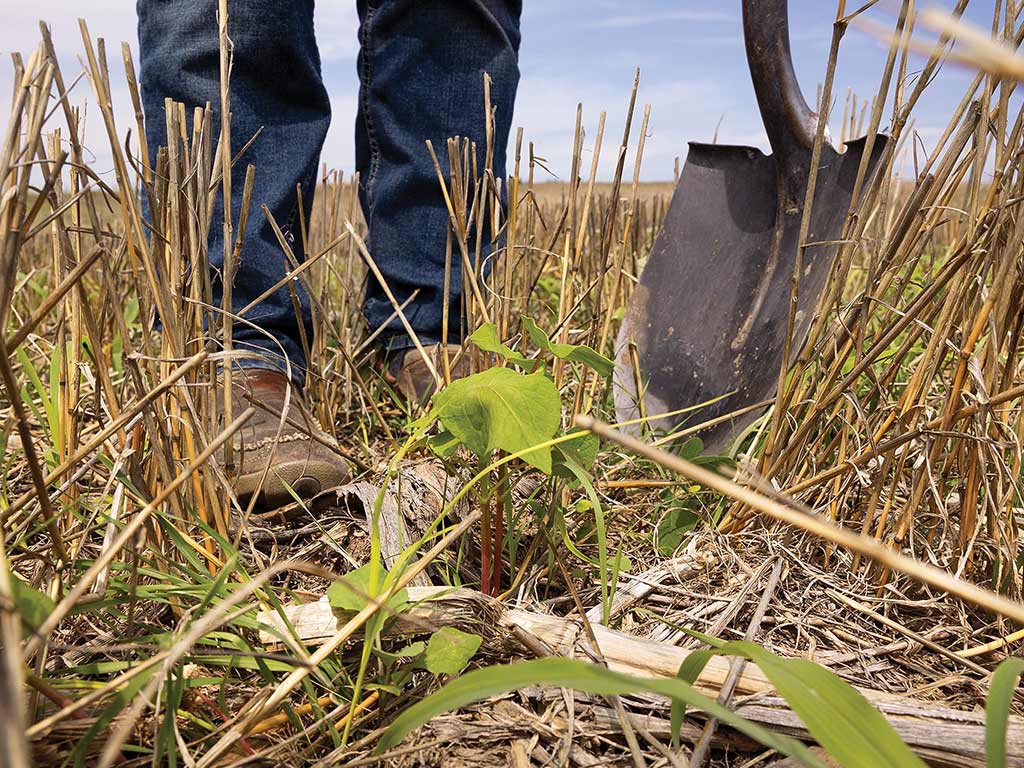Agriculture, Education April 01, 2025
Calibrate Yield Goals
Prioritize profit using soil health to reduce input costs.
by Bill Spiegel
It took a series of fortuitous turns of events for Vance McCoy to hop off the maximum corn yield mindset merry-go-round. For years, the Elsie, Nebraska, farmer was like most farmers in his area: working the ground with tillage equipment, and pushing corn yields with center-pivot irrigation and loads of fertilizers, herbicides, insecticides, and fungicides.
But that changed in 2012.
McCoy's two sons began farming with him, and he switched to no-till to reduce expenses. After a few years, yields began to decline and the McCoys moved to strip-till, but still relied too much on synthetic crop protection products for Vance's taste. They farmed dryland and irrigated acres, with several different crop sequences. Cover crops had never been on his radar until a few years ago, when he was custom planting corn for a neighbor.
"That farmer had been using cover crops, he had integrated livestock on his farm and he wasn't using nearly as much synthetic fertilizer," recalls McCoy, who later that year attended the No-till on the Plains conference in Kansas, and became hooked on YouTube videos featuring soil health legends like Gabe Brown and Ray Archuleta.
Aha! That moment changed Vance's farming career. He adopted cover crops, began studying regenerative agriculture and put those practices into play.
Now, his fields—irrigated or not—have living roots year-round. Those no-till and cover cropped farms help capture as much precipitation as the western Nebraska environment will offer.
"I don't care where you're at. There's a time when you get too much rain, you get it too fast and it won't soak in," says McCoy, whose annual rainfall is 19-inches. As organic matter increases with no-till and cover crops, every drop of rain soaks into the soil.
"Cover crops borrow moisture, but they pay you back with interest," McCoy adds. "When it rains, I want to be ready for it."
Even on irrigated ground, cover crops pay. McCoy is allocated 62.5 inches of irrigation water every five years. The year 2024 represented the fourth year of drought, and he only applied 6.5 inches of water on a field of irrigated corn. "That is just because of the resilience of the soil," he says.
One reason he can use less water is that he is rethinking yield goals. His objective isn't high corn yields; it's maximum profitability. That means he uses half as much nitrogen as when he aimed for 200-plus bushel-per-acre corn. Less nitrogen means less water applied. That also reduces the need for electricity to run irrigation motors. And by using cover crops, weed suppression is excellent, which has all but eliminated the need for herbicides, insecticides, and fungicides, he says. Reducing costs is essential if farmers want to make it through an era of tough prices, he adds.
"In the late 1990s, corn was around $2.00. I made my wife so many promises. I told her when corn got to three dollars, we're going to remodel the kitchen," he recalls. "Well, now corn is at $3, and we're almost panicking.
"The difference between then and now is, we're spending way more money now than we were back then. I have said if I can raise 1990s yields on 1990s input costs with today's prices, I can make it work," he says. "What's gotten inflated is the amount of everything we are using. If I can use half the nitrogen and none of the phosphorus, the cost doesn't matter as much."
Above. Living roots year-round is the goal for Elsie, Nebraska, farmer Vance McCoy, who plants cover mixes after wheat harvest in the summer. McCoy established Triple Creek Cover Crops in 2021. Vance McCoy is using compost extract to fertilize fields, rather than commercial fertilizers. He has built Johnson-Su bioreactors on his farm. Cover crops are integral to the low-input system of farming.
Close to home. In a field of non-GMO corn just outside his home, McCoy has pushed regenerative agriculture hard. "It's right outside our kitchen window, so I have to see this field every day," he jokes.
The farm features constant cover crops, including hairy vetch, which fixes nitrogen; buckwheat to scavenge phosphorus; and a host of grasses, broadleaves and brassicas which combine to suppress weeds. To replace synthetic fertilizers, he uses humic acid and compost extract applied with the planter. With minimal irrigation, corn ears are filled to the tip. Beneficial insects swarm the field. And he hasn't used fungicide in years.
"I planted this field two years in a row to non-GMO, non-treated corn," he says. "This field should be a train wreck."
But it's not. And that's the whole system at work, he says.
McCoy doesn't recommend eliminating synthetic products right away. Using grid soil samples, he made sure soil fertility was adequate. Commercial fertilizer use was reduced incrementally, "…although I don't know any farmer who couldn't cut 10% of his nitrogen use right away," he says. For most farmers, learning how to adopt and use cover crops may take trial and error. But the results can be worth it in the end.
"I want to farm less acres with more margin and have more time to spend with my grandkids," he says. "It takes time to get it built. My biggest regret is that I didn't start sooner." ‡
Read More

AGRICULTURE, FARM OPERATION
Stacking Enterprise
From brewery to bison, this ranch taps every income stream possible.

AGRICULTURE, FARM OPERATION
A Place of Possibility
Somali couple builds their own farm in central Minnesota.





